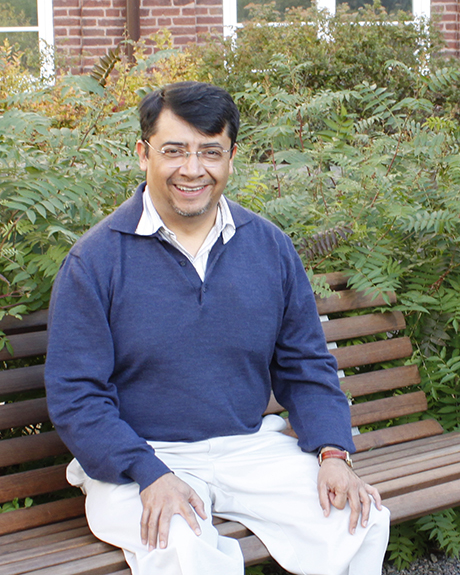What is your view of the honour you’ve received?
“It is a great honour for me and I’m touched and happy about the distinction. I visited Gothenburg for the first time in autumn 2015, when I took over the Linneaus-Palme programme, an exchange programme for students and teachers. This allowed me a to get to know Sweden, particularly Gothenburg.”
 “I am happy and thankful to be a part of the group of honorary doctors at the University of Gothenburg. Hopefully, I can continue to expand my contribution to science and teaching and, in particular, contribute to society with increasingly knowledgeable and well-prepared students. They are, after all, the next generation of researchers and teachers. And as I usually tell students, you have to be better than the teacher; if not, there won’t be any progress.”
“I am happy and thankful to be a part of the group of honorary doctors at the University of Gothenburg. Hopefully, I can continue to expand my contribution to science and teaching and, in particular, contribute to society with increasingly knowledgeable and well-prepared students. They are, after all, the next generation of researchers and teachers. And as I usually tell students, you have to be better than the teacher; if not, there won’t be any progress.”
Can you tell a bit about the Linneaus-Palme exchange?
“It is an exchange programme between the University of Gothenburg and Universidad Nacional Autonoma de Mexico (UNAM) for exchanges of students and teachers within the field of physics. It began in 2014 with signing of the agreement at a conference, but I began coordinating in 2015. We have been very successful in attracting students and professors in both directions. The main idea has been to promote the cultural and scientific exchange of ideas and expertise.”
What is your current research about?
“My current research is within the field of atomic, molecular and optical physics. In particular, I study time-dependent atomic and molecular processes, known as dynamics. I develop theories to explain the connection of electron and nuclear dynamics in the Schrödinger equation, that is, quantum mechanics, with applications in physics and chemistry. I also study atoms and molecules in extreme environmental conditions, particularly high pressure. Another research area is the study of atoms and molecules that interact with lasers.”
Among your current research projects, which one are you most fond of?
“In truth, all of them! But I like to spend time on the old problem of energy transfer in atomic and molecular collisions. It is a field that began with Niels Bohr and that looks at the damage caused by ions or atoms to matter. It has applications in radiation treatment and dosimetry, that is to say cancer treatments and for developing new materials.”
Tell us about your view of teaching?
“Teaching is a fundamental activity at a university. A university without students is not a university. New technology aids teaching, through distance education and with more visual information. But teaching is still an activity that requires educating the brain from a logical perspective, particularly within mathematical physics. In my experience, most important is the old black chalkboards where evidence is presented. If a student can see and understand different lines of evidence, learning takes place. So practicing, solving problems and discussing solutions are more instructive than providing high technology visualisations. The interaction with students is also fundamental in giving them confidence and showing the path forward. That’s how I view teaching.”
Since 2015, Professor Trujillo has been responsibility for the exchange that the Department of Physics at the University of Gothenburg has had with UNAM-Cuernavaca. His research includes time-dependent studies on dispersion, chemical reactions, and processes related to vibration and rotation, excitation and ionisation. His research has resulted in around 100 publications in leading journals, and he is the editor of the prestigious journal Advances in Quantum Chemistry. Professor Trujillo has contributed to strengthening the international aspects at the Faculty of Science.
 “I am happy and thankful to be a part of the group of honorary doctors at the University of Gothenburg. Hopefully, I can continue to expand my contribution to science and teaching and, in particular, contribute to society with increasingly knowledgeable and well-prepared students. They are, after all, the next generation of researchers and teachers. And as I usually tell students, you have to be better than the teacher; if not, there won’t be any progress.”
“I am happy and thankful to be a part of the group of honorary doctors at the University of Gothenburg. Hopefully, I can continue to expand my contribution to science and teaching and, in particular, contribute to society with increasingly knowledgeable and well-prepared students. They are, after all, the next generation of researchers and teachers. And as I usually tell students, you have to be better than the teacher; if not, there won’t be any progress.”